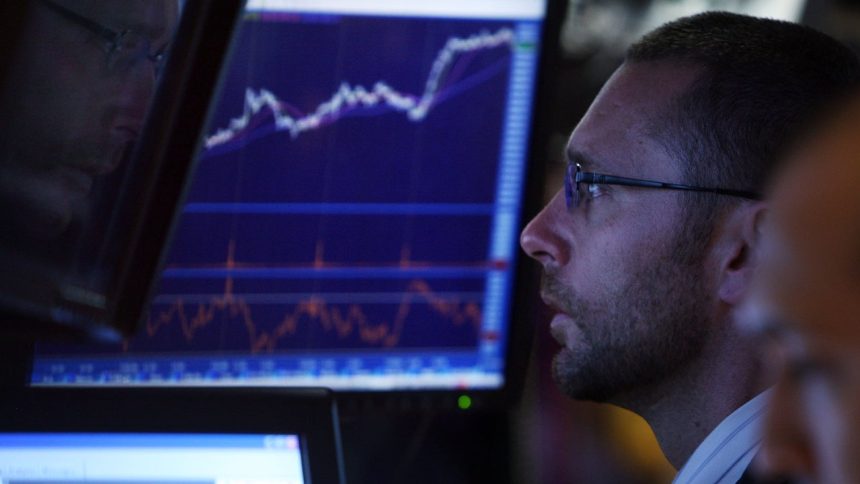On June 28th, 2024, the annual reconstitution of the Russell indexes takes place, historically one of the busiest trading days of the year. This event officially reshuffles the composition of the Russell 1000, 2000, 3000 and other indexes, impacting hundreds of stocks.
FTSE Russell, the index provider, gives traders advanced notice of these changes. The adjustment day trading surge is fueled in large part by institutional investors and hedge funds that track the Russell indexes as they actively rebalance their holdings to reflect the changes.
Investors can leverage analysis of stock size trends to identify potential winners and losers leading up to the annual reshuffling.
This year marks the 36th annual Russell reconstitution as well as the 40th anniversary of the launch of the Russell U.S. Indexes.
The 2024 Russell reconstitution
FTSE Russell, which maintains the indexes, began preparing for its annual index rebalancing in April 2024. On May 24th, 2024, it will release the first set of preliminary lists of potential stocks getting added or removed from each Russell Index. Investors often check this list to help predict potential market movements in the weeks ahead.
Additional revised lists are released May 31st, June 7th, June 14th and June 21st, 2024, and offer a clearer picture of what the final indexes will look like.
The last day of the Russell rebalancing has traditionally been one of the highest trading volume days of the year. At the June 2023 reconstitution, $72.7 billion in U.S. stocks were bought and sold in the final moments of Friday trading on the New York Stock Exchange exchange, according to the London Stock Exchange Group (LSEG).
While the annual rebalancing attracts the most attention, Russell indexes also make smaller, quarterly adjustments to reflect new IPOs. These tweaks are meant to capture new publicly traded companies and minimize disruption caused by a large influx of IPOs during the June reconstitution.
What are the Russell Indexes?
The Russell Indexes are a widely used family of benchmarks that track different segments of the U.S. stock market. Unlike the Dow Jones Industrial Average, which focuses on 30 large-cap companies, or the S&P 500, which tracks 500 leading publicly-traded companies, the Russell Indexes offer a more comprehensive picture of the overall market.
The flagship Russell 3000 encompasses 3,000 publicly-traded stocks, representing about 96 percent of the investable U.S. stock market. It’s broken down further into the Russell 1000, which includes the 1,000 largest companies by market cap, and the Russell 2000.
These indexes, along with others like the Russell Midcap and Russell Microcap, give investors a range of investment options across the entire U.S. market.
The Russell indexes are maintained and created by FTSE Russell, a subsidiary of the London Stock Exchange Group.
What is index rebalancing?
A stock market index is like a basket of stocks that reflects a specific segment of the market. It tracks the performance of those stocks and gives you a general idea of how that section of the market is doing.
But financial indexes aren’t static. Companies grow and shrink, causing their market caps to fluctuate. To make sure indexes accurately reflect the current landscape, they undergo periodic rebalancing.
Rebalancing involves adjusting the weightings of each company within the index to maintain its intended market cap representation.
Major stock indexes like the Dow Jones Industrial Average and S&P 500 employ a different rebalancing strategy than the Russell Indexes. These indexes usually only make adjustments following a significant event, such as a merger or acquisition, that drastically changes a company’s market cap and alters the index’s composition.
The Russell Indexes, on the other hand, undergo a more comprehensive annual rebalancing, or reconstitution. During this yearly event, companies are added and removed from the various Russell Indexes based on their updated market cap and, to a lesser degree, other factors, such as price per share, share availability, trading volume and company structure.
While investors can’t invest in the Russell indexes directly, they can buy index funds, mutual funds and ETFs that track one of the indexes.
The Russell annual reconstitution triggers significant trading activity, driven in large part by institutional investors and funds that track the Russell indexes, since they need to adjust their holdings to reflect any changes. This buying and selling pressure can create volatility in the stock prices of companies entering or exiting the indexes.
Why Russell rebalancing matters for investors
Investors can leverage the Russell reconstitution process to potentially identify promising investment opportunities. Companies expected to be added to a Russell Index, especially the Russell 1000, often experience increased buying pressure in anticipation of the change.
This can lead to a major run up in the stock’s price in the weeks leading up to reconstitution. Analyzing the preliminary lists of potential additions and exclusions released by FTSE Russell can help investors get a jump on the trend.
“But individual investors are best to focus on the long-term and ignore, rather than respond to, any temporary volatility that results,” says Greg McBride, chief financial analyst at Bankrate.
McBride points out that while traders will try to use the annual event in their favor, long-term investors are best to ignore the noise.
“Investors in low-cost index funds don’t need to worry about which needles are moving in and out of the haystack, and can take comfort in owning the whole haystack,” says McBride.
Bottom line
The annual Russell reconstitution is a high-volume trading day as institutional investors and funds adjust their holdings to match the updated indexes. As companies grow and shrink, the annual reshuffling helps ensure the Russell indexes continue to accurately reflect the market.
Traders often analyze the preliminary lists released in May and and June to identify potential winners and losers. But experts recommend index fund investors focus on their overall strategy and avoid chasing short-term trends.
Editorial Disclaimer: All investors are advised to conduct their own independent research into investment strategies before making an investment decision. In addition, investors are advised that past investment product performance is no guarantee of future price appreciation.
Read the full article here
















